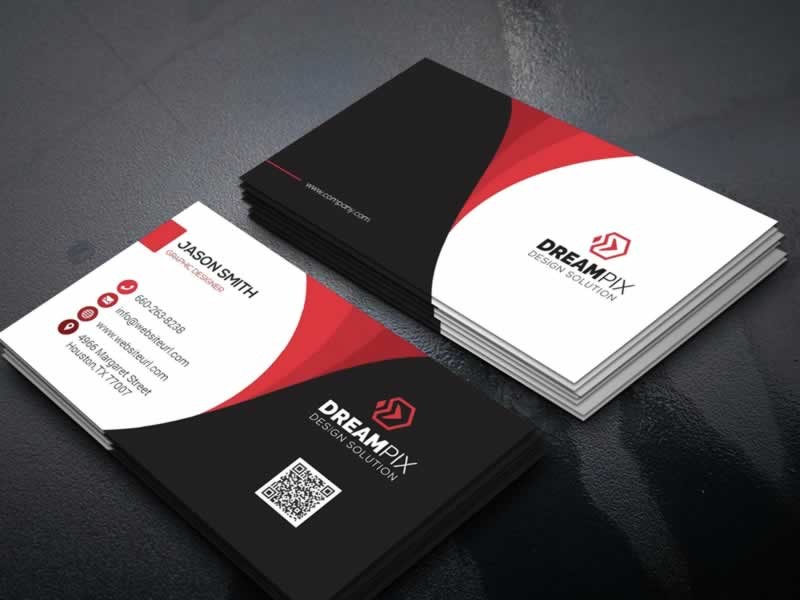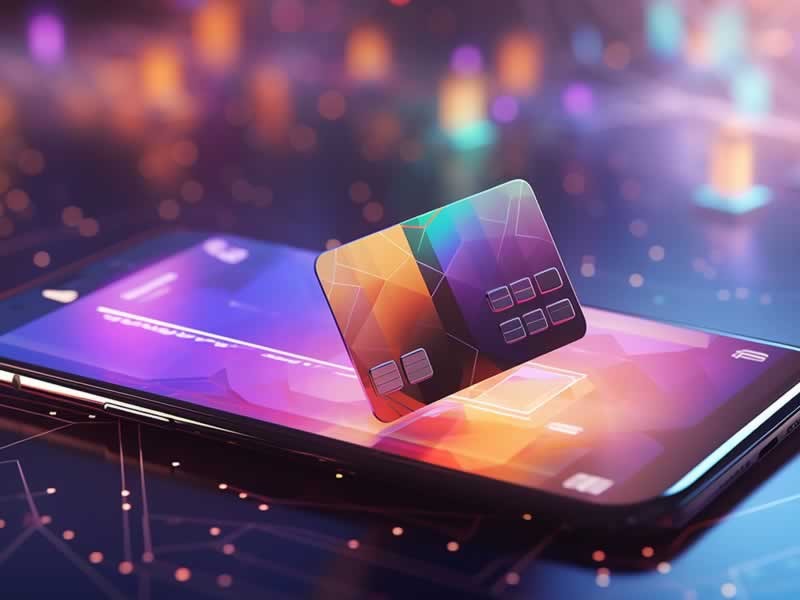Insight Blog
Agility’s perspectives on transforming the employee's experience throughout remote transformation using connected enterprise tools.
13 minutes reading time
(2699 words)
What is a digital business card and how to make one online
In this article, we will explain What is a digital business card and how to make one online, their benefits, and how to create one. We will also provide practical tips for using these cards effectively in professional networking.
In today's digital world, networking is key to advancing your career, and the tools we use are changing.
Traditional business cards are being replaced by digital ones, which are easier to share and update. These digital cards are better for the environment and more practical, letting you share your contact details quickly and easily across different platforms, which is ideal for fast-paced modern business environments.
In this article, we will explain What is a digital business card and how to make one online, their benefits, and how to create one. We will also provide practical tips for using these cards effectively in professional networking.
What is a Digital Business Card?
A digital business card modernizes the traditional business card and is designed for electronically sharing contact details and building professional connections. Unlike physical cards, digital ones can be easily updated and enriched with multimedia content like images, videos, and professional links.
They can be quickly shared across various digital platforms such as email, social media, or QR codes, NFC technology, or links making them ideal for the fast-paced, digital nature of modern business environments.
Digital business cards offer a multitude of benefits for modern networking:- Schedule meetings seamlessly.
- Directly navigate to your website.
- Connect with social media profiles effortlessly.
- Access custom landing pages tailored to specific audiences.
- Track engagement metrics to gauge effectiveness.
These cards have gained popularity as a sustainable, cost-effective, and user-friendly alternative to traditional paper cards in today's technology-driven era.
Learn how to make a digital business card here.
9 Digital business card examples
Digital business cards represent contemporary, environmentally conscious alternatives to traditional paper cards, offering a memorable way to connect with potential clients and partners.
For inspiration, here are 9 outstanding examples of digital business cards:
For inspiration, here are 9 outstanding examples of digital business cards:
- Clean and Professional: A "Clean and Professional" digital business card mirrors the sophistication of a traditional paper card in the virtual realm. It boasts simplicity and elegance, featuring essential details such as your name, contact information, and logo—a visual representation of your business identity. This type of card is ideal for individuals aiming to convey professionalism and refinement, akin to dressing in formal attire to make a lasting impression.
- Creative: Tailored for creative individuals, the Creative digital business card serves as an online portfolio, showcasing your innovative projects and creations. Alongside displaying your work, it provides a link to your website, making it an excellent platform for artists, designers, and other creatives to exhibit their talents and artistic endeavors.
- Interactive: Interactive digital business cards incorporate engaging videos that narrate the story and offerings of your company. These captivating cards offer recipients an exciting opportunity to learn about your business in a dynamic and immersive manner, leaving a memorable impression that goes beyond conventional text-based introductions.
- Social: Social digital business cards feature links to your various social media profiles, including Facebook, Instagram, or Twitter. By sharing this card, you provide a convenient avenue for others to connect with you on these platforms, facilitating seamless online networking and communication.
- Multilingual: Multilingual digital business cards ensure accessibility for individuals who speak different languages. By offering contact information and details about your business in various languages, you demonstrate inclusivity and facilitate effective communication with a diverse audience, fostering international connections and collaborations.
- QR Code: Incorporating a free QR code into your digital business card streamlines the sharing of contact information. With a simple scan using a smartphone, recipients can effortlessly save your details without manual input, enhancing convenience and efficiency in networking interactions.
- NFC Magic: NFC Magic-enabled digital business cards leverage Near Field Communication (NFC) technology to enable contact information transfer with a simple touch. This innovative feature simplifies the exchange of information, offering recipients a hassle-free method to save your details with ease.
- Video: Video-enabled digital business cards provide a personalized touch by featuring short videos where key stakeholders, such as the CEO, deliver messages about the company. This interactive approach humanizes your business interactions, making potential clients feel as if they are engaging with you in person.
- Animated: Animated digital business cards inject fun and creativity into your networking efforts with moving graphics or cartoons. By incorporating dynamic visuals, such as animated logos or characters, these cards captivate attention and leave a lasting impression on recipients, setting your business apart in a playful and memorable way.
What is the biggest problem of digital business cards?
Despite the growing trend towards digital business cards, many companies still need to be convinced to embrace this innovation, leading to a reliance on both digital and physical cards. This dual approach complicates contact management for individuals and businesses alike. One workaround involves utilizing paper business card scanners to analyze and import data from traditional cards swiftly.
However, certain drawbacks hinder the widespread adoption of digital business cards. Some platforms require proprietary apps for ownership and storage, limiting the ease of sharing with clients. Additionally, compatibility issues arise when cards are created using specific apps that may only support some operating systems, posing a potential barrier to seamless communication and networking.
In light of these challenges, businesses must explore solutions that streamline contact exchange and ensure compatibility across different platforms and devices.
The Advantages of Digital Business Cards Over Traditional Paper Cards
In-person encounters now favor digital business cards for their ease of use, sustainability, and alignment with business goals. Unlike paper cards, digital versions are reusable, with unlimited scans, saving significant costs for companies.
The primary drawback of going digital arises only if clients or target customers resist technology, a rarity with smartphone ownership at 86.29% worldwide and the increasing prevalence of digital wallet payments.
Additional benefits of digital business cards include:
Given these advantages, it's evident why paper business cards are falling out of favor.
The primary drawback of going digital arises only if clients or target customers resist technology, a rarity with smartphone ownership at 86.29% worldwide and the increasing prevalence of digital wallet payments.
Additional benefits of digital business cards include:
- Capacity for storing more information than traditional cards
- Lower environmental impact due to reduced carbon footprint
- Ease of updating information and design
- Ability to direct individuals to booking links
- Capability to showcase specific content like blogs, trials, or special offers
- Cost-effectiveness compared to paper alternatives
- Convenience of portability, typically residing on a smartphone.
Given these advantages, it's evident why paper business cards are falling out of favor.
Types of Digital Business Cards
Digital business cards come in various types, each tailored to specific requirements and offering distinct functionalities:
- Basic Digital Cards: These offer essential details like name, contact information, and company affiliation, typically shared via email or messaging platforms.
- Interactive Digital Cards: These feature links to social media profiles, websites, and multimedia content such as videos or presentations. QR codes often lead to professional portfolios or profiles.
- QR Code Cards: Centered around a QR code, these cards, when scanned, reveal contact details or link to digital profiles like LinkedIn. QR codes can be displayed on screens or printed materials.
- NFC-Enabled Cards: Utilizing Near Field Communication (NFC), these cards transfer contact information to a smartphone by tapping the card against an NFC-enabled device.
- App-Based Cards: Managed through dedicated applications, these cards offer advanced features such as analytics, CRM integration, and remote updates.
- Video Digital Cards: These leverage video content to deliver messages, showcase products or services, or provide personal introductions, aiming to leave a lasting impression.
- Virtual and Augmented Reality Cards: Incorporating AR or VR technology, these cards offer immersive experiences like virtual tours, 3D models, or interactive elements.
- Social Media Integrated Cards: Tailored to enhance networking, these cards link directly to a user's social media profiles, particularly beneficial for influencers and marketing professionals.
Each type of digital business card addresses specific professional and business needs, ranging from simple networking to delivering interactive and immersive user experiences
Follow us and access great exclusive content everyday: Follow us on Google News
Key Features of Digital Business Cards
Understanding the essential features of digital business cards is crucial as they signify a modern evolution of traditional networking tools, perfectly adapted for the digital era.
- Contact Information: Digital business cards retain basic details like name, company, and contact information, but they go beyond by incorporating a wider range of contact options such as social media profiles, websites, and multimedia content.
- Interactivity: These cards boast clickable links for email addresses, phone numbers, and URLs, facilitating immediate and interactive engagement with recipients.
- Customization: Users have the flexibility to personalize their cards with custom designs, colors, and media elements, enabling a dynamic representation of their personal and professional brand.
- Eco-Friendly: Digital business cards contribute to environmental sustainability by reducing paper consumption, making them a more eco-friendly option compared to traditional paper cards.
- Analytics: Certain digital business card platforms offer analytics tools, allowing users to track metrics like views and downloads of their information, providing valuable insights into their networking efforts.
Understanding these key features empowers users to leverage digital business cards effectively, enhancing their networking capabilities in the digital landscape.
How to use my digital business card?
Just like a traditional business card, a digital business card (DBC) serves as a tool to exchange contact information with partners, clients, and others. Depending on the platform used, a DBC can be shared via messaging apps, social media posts, email attachments, or even included in resumes, making it effortless to connect with people globally.
Enhanced with additional features, a DBC becomes more than just a contact repository. It can invite you to explore your website, products, catalogs, and more, all from a single card. Some applications even offer the option to create animated cards, adding an engaging touch to your digital presence.
Moreover, advanced settings in a DBC enable reciprocal contact acquisition, which is particularly valuable for online advertising to anonymous audiences. Certain services facilitate users to share their email or phone number directly with the DBC owner, fostering meaningful connections. You can even set up mandatory email requests, ensuring your information is fairly exchanged.
Tracking capabilities are another valuable aspect of digital business cards. Many platforms provide insights into card interactions, such as the number of views, saves, and other engagements. With sophisticated settings, you can analyze the effectiveness of different sharing methods and marketing channels, empowering you to refine your networking strategies effectively.
You may also like: Best Apps for Employees: UPDATED 2022 – A Complete Guide
Does this imply that traditional paper business cards are obsolete?
While digital business cards offer numerous advantages and are increasingly popular, it doesn't necessarily mean that paper business cards are dead. Traditional paper cards still hold significance in certain situations, especially in more formal or traditional settings where digital alternatives may not be as readily accepted.
Additionally, some individuals may prefer the tangible nature of paper cards or find them more convenient in specific contexts.
Therefore, while digital business cards are thriving, paper cards still have a place in the realm of networking and professional communication.
Best Practices for Using Digital Business Cards
Effectively leveraging digital business cards can greatly enhance your networking and professional engagements.
Here are some key practices to consider:
- Keep Information Up to Date: Regularly update your digital business card with the latest contact details, job title, and other pertinent information. Take advantage of the ease of updating offered by digital cards to ensure accuracy at all times.
- Design for Clarity and Impact: Craft a well-designed digital business card that reflects your brand identity and professionalism. Utilize a clean layout, legible fonts, and incorporate your business logo to make a strong visual impression. The design should facilitate easy comprehension for recipients.
- Incorporate Essential Contact Details: Include all essential contact information such as your name, job title, company, phone number, email address, and links to professional social media profiles. Tailor the content to align with industry standards and your personal branding strategy.
- Use Interactive Elements Wisely: Enhance your card with interactive elements like links to your portfolio, social media profiles, or personal website. However, ensure that these elements add value and enhance the user experience without overwhelming the card with excessive links.
- Optimize for Mobile: Given that many recipients will view your digital card on mobile devices, optimize it for small screens. Implement responsive design elements and ensure clickable areas are easy to navigate on touchscreen devices, enhancing accessibility and usability.
- Leverage QR Codes: Include a QR code on your digital business card to make it easy for people to download your contact details. QR codes can be scanned at conferences, meetings, or virtual meeting screens.
- Promote Your Card Proactively: Share your digital business card in email signatures, on your social media profiles, and during virtual meetings. It's also a good tool for both physical and virtual networking situations.
- Measure and Adjust: If your digital business card platform offers analytics, use the insights to see how often your card is viewed or shared. This data can help you understand what's working and might need tweaking.
- Practice Good Etiquette: Like traditional business cards, digital etiquette is essential. Ask for permission before sending or sharing your card, and respect how and when you distribute it.
- Secure Your Information: Since digital business cards can include sensitive contact information, ensure that the platform you use has robust security measures to protect your data and that of your recipients.
By following these best practices, you can maximize the effectiveness of your digital business cards and make lasting impressions in your professional interactions.
How to create a digital business card online
Creating a digital business card online is a great way to network and share your professional information digitally. Here are the steps to create one:
- Choose a Platform: There are various online platforms and websites that offer tools to create digital business cards. Choose one that suits your needs and preferences. Some popular options include Canva, Adobe Spark, and Visme.
- Sign Up/Login: If required, sign up for an account on the chosen platform or log in if you already have an account.
- Select a Template: Browse through the available templates and choose one that matches your style and branding. Most platforms offer a wide range of customizable templates to choose from.
- Customize Your Card: Once you've selected a template, customize it with your information. Include details such as your name, job title, company name, contact information (email, phone number, website), and any relevant social media profiles.
- Add Branding Elements: Personalize your digital business card with your brand colors, logo, and any other branding elements to make it more visually appealing and memorable.
- Include Multimedia Elements: Many online platforms allow you to incorporate multimedia elements such as images, videos, and clickable links into your digital business card. Utilize these features to enhance the interactivity and engagement of your card.
- Proofread and Review: Before finalizing your digital business card, double-check all the information for accuracy and make sure there are no typos or errors.
- Save and Download: Once you're satisfied with the design, save your digital business card. Most platforms allow you to download the card as a digital file, typically in formats such as PDF or JPEG.
- Share Your Card: Share your digital business card with your contacts via email, social media, or messaging apps. You can also include it in your email signature or add it to your LinkedIn profile.
- Update as Needed: Remember to update your digital business card regularly to reflect any changes in your contact information or professional details.
By following these steps, you can create a professional and visually appealing digital business card to help you make a lasting impression on potential clients, employers, and collaborators.
Free ebook: How To Get Your Intranet Off The Ground
Wrapping up
Digital business cards are a cost-effective, eco-friendly, and innovative way to maintain and expand professional networks. They offer flexibility, ease of customization, and the ability to integrate a wide array of information and interactive features not possible with traditional business cards.
As we move further into the digital age, these cards will likely become the standard method of professional exchange, replacing their paper predecessors and reshaping how we connect in the business world.
Categories
Blog
(2590)
Business Management
(318)
Employee Engagement
(204)
Digital Transformation
(172)
Intranets
(119)
Growth
(118)
Remote Work
(61)
Sales
(48)
Collaboration
(37)
Culture
(29)
Project management
(29)
Customer Experience
(26)
Knowledge Management
(21)
Leadership
(20)
Comparisons
(5)
Ready to learn more? 👍
One platform to optimize, manage and track all of your teams. Your new digital workplace is a click away. 🚀
Free for 14 days, no credit card required.















